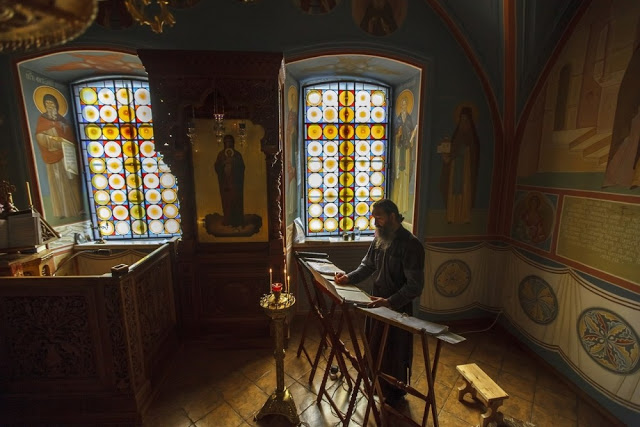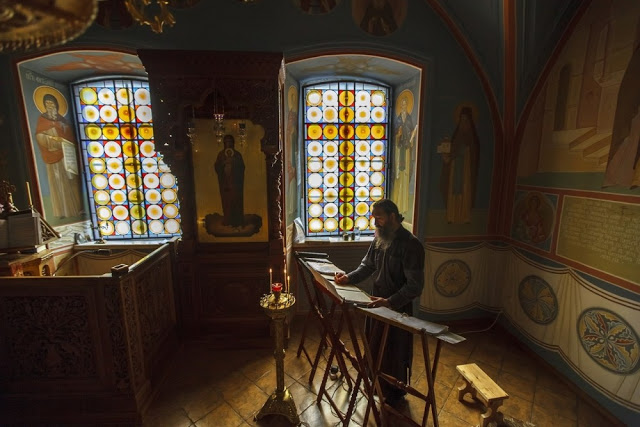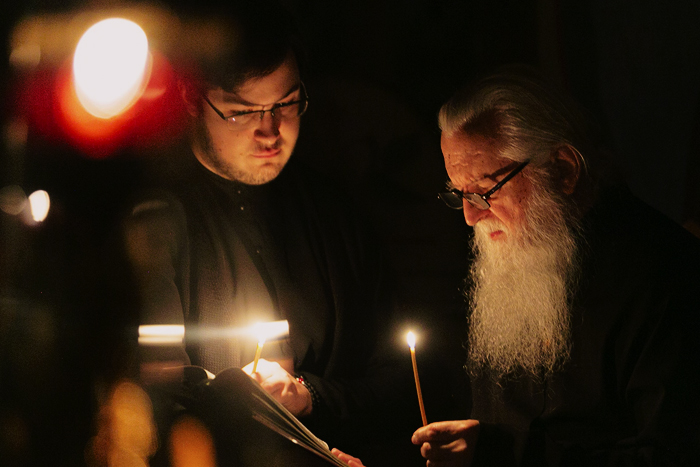
Since the aim of church rubrics is to adapt church services to the holy commemorations of the day, their compilation must have begun the very moment when these commemorations became part of Christian worship. Naturally, they were compiled in oral form at first and only later were they put into written form. This occurred in the apostolic period when at least the liturgical celebration of the Day of Resurrection certainly existed. Therefore it would not be an exaggeration to say that the first lines of our church rubrics were composed by the holy Apostles themselves. It is not surprising, then, that old Russian scribes used to call the Typicon a God-inspired book. The compilation of the Typicon began at a time when Christian spiritual life was at a high point, and this made possible the appearance of Divinely-inspired writings.
The development of our services began in apostolic times and was completed only in the 16th century, when the rubrics attained their full form as we know it today. Of course, the value of the rubrics cannot be belittled by the fact that 1500 years were necessary for their creation; to the contrary. Thanks to such a long period of development, the Church of different epochs was able to participate in this process. Each one of these epochs had its strong points and beauty and left its mark on our centuries-old Typicon. Clearly, then, the rubrics were created by the Church throughout different periods of time, and also in different areas and countries. Consequently, the rubrics were formed not only by the Apostolic Church, but by the Church catholic, both in place and in time. In the pages of the rubrics one can sense the stirrings of the fragrance of Church life; form the piety of Constantinople to the asceticism of Egypt and the Thebaid. If we stop to consider the amount of Old Testament material found in our services, we will, on hearing them, receive a spiritual sense of holy, biblical antiquity, and to “walk with one mind” with the Church of the Patriarchs and Prophets.
Although the service rubrics were the creation of the Church as a whole, they were primarily developed by her most worthy sons. Their first hand authors were people who knew no other life than that of prayer and fasting, those for whom the sweetness of worship allowed the intake of food once every five days, those who slept either standing or sitting, who finished their all-night vigils in churches which were then locked from the outside and set ablaze by pagans, martyrs whose blood was sometimes mixed with the Blood of the Eucharist. It is not possible for the pages of the rubrics which they compiled not to have been soaked by tears of compunction and the sacrificial blood of their confession of faith. It is impossible not to feel this from the texts and it is precisely this that endows the Typicon with that special spirit of holiness and purity.
The mystery of the profound effect the Orthodox service has on one’s soul lies in the fact that the participant feels the influence of the Church of all ages, personified by Her best representatives, and thus partakes in the life of the Church as a whole. This influence comes not only from the poetry and music of the services, but also from their structure; from the forty repetitions of “Lord have mercy,” from the quiet prostrations which bring a long pause between the chanting and reading, from the antiphonal singing.
It is with the structure and the aesthetics of the services that the Typicon is, in fact, concerned.
The rubrics presently in use were partly compiled by St. Sabbas or, more precisely, by the monastery of our holy and God-bearing Father Sabbas, near Jerusalem. This monastery, located in the severe Judean desert, close to Jerusalem, was founded in the fifth century by St. Sabbas the Sanctified. At this time it is not possible to determine from currently available sources just what portion of the rubrics belongs to St. Sabbas himself. In any case, the home of our present rubrics is Palestine—its desert which was permeated by fasting and asceticism. Consequently, the creators of our church rubrics were brought up in the same desert which gave us Prophet Elijah and St. John the Baptist and which prepared the Saviour Himself for His service in the world. The very desert air was saturated by holy remembrances. Nearby were the greatest holy sites of the Christian world; Jerusalem with the Tomb of our Lord and the Church of the Resurrection, where prayer becomes more earnest almost of its own accord. It was here, as witnessed by a western traveler of the 4th century (Sylcia Aquinitas), that when the Passion Gospels were read “all the people would cry and weep so much that no one was left at this hour who was not moved to tears.”
Translated by Priest Peter Perekrestov
Edited by Lawrence Miller
From the Introductory chapter, “The History of Church Rubrics”
of The Explanatory Typicon by Prof. Michael Skaballanovitch
of the Kiev Theological Academy, 1910




